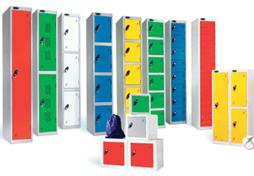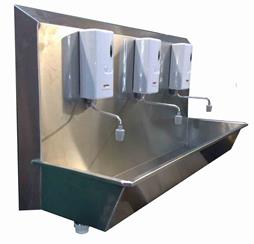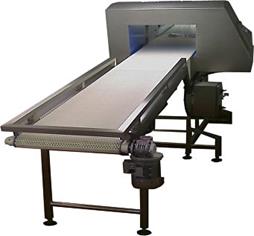The Importance of Stainless Steel in the Construction of Changing Rooms
27-08-2019
Wherever a changing room is required, installing good quality stainless steel equipment is always advisable. This applies in all sorts of locations including food & manufacturing facilities, public amenities such as sports centres or motorway service stations, educational institutions, military facilities, industrial buildings, or commercial premises such as fitness centres or health spas.
While the nature of these locations and the way in which changing rooms are used in them varies considerably, the importance of stainless steel equipment as summarised below is broadly similar across the board. As such it is essential to pay close attention to all factors, although some areas might be a particular priority depending on the specific demands placed on the changing room in question.
Durability
Changing room fittings such as sinks, cubicles, toilets, urinals, showers and automated hand-washing units are likely to be subjected to sustained use over a prolonged period of time. When considered alongside the fact that water is likely to be constantly present, the necessity for all equipment to be as durable as possible is clear. The inherent strength of stainless steel lends itself exceptionally well to this, as does its formidable anti-corrosion properties.
Furthermore, it is possible to replace stainless steel components relatively easily, and any dents can often be repaired using only a few basic tools. This means that stainless steel equipment compares favourably with ceramic alternatives which are generally impossible to repair adequately if broken or damaged.
Safety
Safety should be uppermost in the mind of anyone engaged in the design and installation of a changing room facility. To be sure of maximum safety standards, it is essential to install fittings of a suitable size. Stainless steel offers a highly reliable and adaptable option in this regard, as it can be tailored to perfectly suit the specific size requirements of any location. This avoids, for example, a sink which is too large for the room in which it is installed causing an obstruction.
In the event that damage should occur, stainless steel fittings have the advantage over ceramic alternatives of not leaving jagged edges which can pose a safety risk. Additionally, stainless steel components with an anti-slip surface such as shower trays or baths generally offer more resistance in wet conditions than their ceramic counterparts.
Hygiene
While stainless steel surfaces lack the inherent anti-bacterial properties of copper or silver, they nevertheless offer excellent hygiene benefits provided the correct cleaning products are used and a proper cleaning procedure is put in place. Unlike ceramic surfaces, stainless steel will not crack over time to create a haven for bacteria, and the precise way in which it can be installed provides surfaces which offer exceptional ease of cleaning by eliminating awkward 'nooks and crannies' which can be difficult to reach and are easily overlooked by cleaning staff.
Additionally, stainless steel surfaces which have been cleaned thoroughly have a distinctive 'shine'. If present this reassures users, and if it is not in evidence cleaning supervisors are alerted to the need for extra care to be taken to ensure that an acceptable level of hygiene has been achieved.






